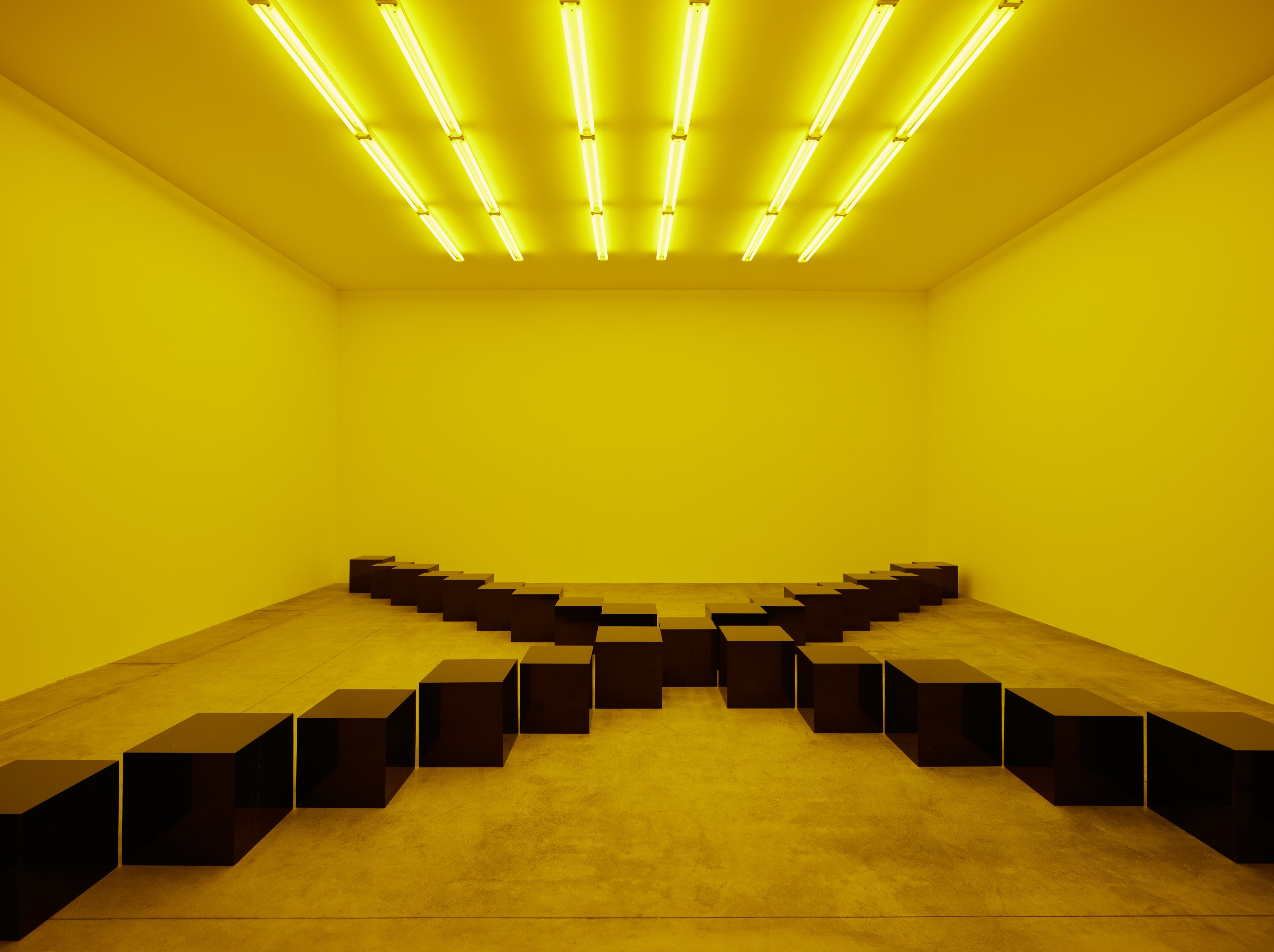Bruce Nauman review: A strangely exhilarating look at a supremely elusive artist
This show at Hangar Bicocca in Milan reveals works in which the gallery-goer becomes the protagonist in subtle visual jokes

Bruce Nauman is the deadpan trickster of conceptual art. The 81-year-old American artist’s status as a name to drop – “one of the world’s most influential artists” is the endless description – has barely slipped over the 50 plus years of his career. Yet signature works such as “Walking in an Exaggerated Manner Around the Perimeter of a Square” (1968), a video of the artist doing precisely that, feel like inscrutable and endlessly extended conceptual-one liners. The fact that the viewer is left wondering if the work involves great philosophical profundities, or if what you see is pretty much what you get, has added, I’ve always felt, to Nauman’s standing. No one wants to be the only person in the room who isn’t in on a great “intellectual” joke.
This major exhibition, now in its third and largest incarnation, after showings at Tate Modern and Amsterdam’s Stedelijk Museum, represents perhaps the ultimate opportunity to get to grips with this supremely elusive artist. Where the earlier manifestations (Tate’s ran for only three weeks due to Covid) included Nauman’s highly influential video works, this version in the truly gigantic Hangar Bicocca, focuses on “architectural” works: corridors and entire rooms. It’s a chance to get physically inside Nauman’s work and find out what, if anything, is at the bottom of it.
The first impression is of a collection of extremely refined walk-in minimal sculptures. The exhibition promises that Nauman’s architecture explores disquieting sensations of confusion and confinement. The first work we see is Dream Passage with Four Corridors (1984), consisting of four neon-lit corridors converging on a central space with a steel table and two steel chairs, and another table and chairs projecting mirror-like from above. It’s undeniably beautiful, but not quite dream-like enough – let alone nightmarish.
Subscribe to Independent Premium to bookmark this article
Want to bookmark your favourite articles and stories to read or reference later? Start your Independent Premium subscription today.
Join our commenting forum
Join thought-provoking conversations, follow other Independent readers and see their replies